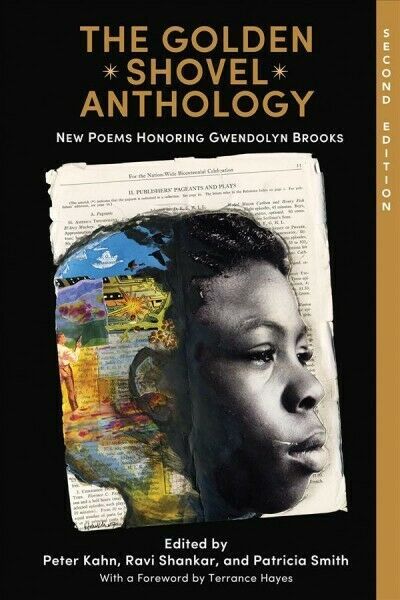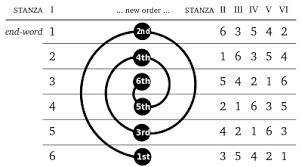Odes
An Ode is a love poem to an object or an idea. Writing odes asks us to elevate the everyday, mundane, the ordinary to the level of the divine. Writing them also asks us to consider what things in our lives are worthy of poetry (spoiler alert: pretty much everything).
Step One
Make a list of the following things.
Favorite time of day (a specific hour, dusk, dawn, etc.)
Favorite food made by someone for you
Favorite spot in the neighborhood
Favorite spot in the city
Favorite day of the week
Favorite season
Favorite subject in school
Name an idiosyncrasy you have
Name what you do on Saturday night
Favorite family ritual
Favorite thing on your city’s calendar
Favorite slang
Something you leave the house with everyday
Favorite item of clothing when you want to look fresh
Step Two
Read Ode to Cheese Fries by José Olivarez. Read the poem aloud.
What do we like about the poem? What works for us? What questions does it raise for us? What is the tone of the poem? How does the speaker / writer feel about the subject of the poem? In what ways does the poet’s love manifest in the poem?
Step Three
Pick one thing from your list and write an ode. Of course, you can bring other elements from your list into the poem, but one of your favorite things should be the central focus of the poem. In what ways do you love this thing? What are the specific instances
where the you have interacted / used / experienced the subject of the poem?
Step Four
Share. Post your ode on social media and let us know where we can find it!
For more information about odes, check out these online resources:
Poetry Foundation
Academy of American Poets
For more information on José Olivarez and his book Citizen Illegal, go to Haymarket Books.
If you’re a poet who wants to experiment with fiction writing, or if you need a break from thinking about line breaks, the prose poem is a great place to start. Written in paragraph form, the prose poem uses the poetic qualities of vivid imagery, sound, and repetition to tell a short story. 1. Write a random sentence about anything. Make it weird, wonky, or deadly serious. Whatever you have in mind write it down in a sentence. (Or choose a sentence from another piece of writing: your journal, the newspaper, Twitter, the book closest to you...) 2. Circle 2-3 words within that sentence that seem interesting, and then make a list of 10-20 words you associate with those words. 3. Once you have your list, start free-writing a paragraph. In every new sentence, use a different word written on your list. 4. Once you have your prose-poem read it aloud and share with someone. Resources Read Rachel Jamison Webster’s " Dolphins at Seven Weeks " as an example. Also, check out the Poetry Foundation's page on Prose Poetry

Fla sh fiction is an extra compressed form of the short story, ranging from 400-500 words. This form is perfect for poets who want to try their hand at fiction writing without the length. 1. Make a list of 10 objects that you can see in your neighborhood. 2. Read George Saunders’s story "Sticks" 3. Choose one of the objects on your list, and write about how a specific person interacts or changes the item over a period of time, such as the four seasons, or different holidays. 4. Once you’ve finished writing share your story and the object that i nspired it.

The American sonnet is a looser, more musical and inventive variation than its traditional counterpart. Having no required rhyme scheme or specific meter, the poet has freedom to innovate their own constraints within 14 lines. Here is one way to make an American Sonnet: 1. Make three different lists a. 10 abstract ideas (abstract ideas are things you can't see or hold, like ideas or feelings [love, hate, anger, joy]) b. 10 items you can see from where you are right now c. 5 songs or musical genres you love (either right now or used to love) 2. Pick one of your abstract ideas as a theme for your poem. Then choose five things off your items list that represent this theme. Then chose as many songs or genres as you want to represent the theme. Confused?? Don't worry: here is an example: a. Abstract things: love, hate, joy, sorrow, freedom, peace, acceptance, friendliness, hope, power b. Things I see from where I sit: maple tree, magnolia, white truck, chainlink fence, crow, neighbor's dog, houseplant I don't know the name of, carpet, bookshelf c. Songs/genres: "Fetch the Bolt Cutters" (Fiona Apple), "Fight the Power" (Public Enemy), "Chandelier" (Sia), "Cuz I Love You" (Lizzo), "Freak Scene" (Dinosaur Jr.) My poem's theme is Power (from my abstract list). Maple tree, crow, white truck, neighbor's dog, bookshelf are my five things from the items list. Now I will write my poem with all these things in mind. It's not that the poem is a narrative, it's not "about" anything at this point. I am just going to lean into these ideas and see where it goes. The joy comes from the surprise. Let yourself be surprised. 3. Write an American Sonnet using the roadmap above. For the purposes of definition, a sonnet is a poem with 14 lines. That is really the only constraint: 14 lines only. Or, write about a music video, for the musical genre you chose, that shows how the item is connected to the idea. 4. Once finished, either share with someone or post to IG . RESOURCES Wanda Coleman was an innovator in this form, writing many different types of American Sonnets influenced by jazz music. Below is one of her poems. ( Read the poem aloud, or listen to it h ere . ) American Sonnet 35 by Wanda Coleman boooooooo. spooky ripplings of icy waves. This umpteenth time she returns—this invisible woman long on haunting short on ectoplasm "you're a good man, sistuh," a lover sighed solongago. "keep your oil slick and your motor running." wretched stained mirrors within mirrors of fractured webbings like nests of manic spiders reflect her ruined mien (rue wiggles remorse squiggles woe jiggles bestride her). oozy Manes spill out yonder spooling in night's lofty hour exudes her gloom and spew in rankling odor of heady dour as she strives to retrieve flesh to cloak her bones again to thrive to keep her poisoned id alive usta be young usta be gifted—still black Tips for writing an American Sonnet Get a piece of paper and do a little resource-gathering by answering each aspect in either regular sentences or in a list. Coleman considers four (4) aspects while writing American Sonnets: 1.Issues (what is the sonnet about?) 2.Rhythms (what kinds of pattern of sound do you want in the poem?) 3.Tones (what are the different attitudes in the poem?) 4.Musical preference (What music can influence the poem?) Other Resources An email interview between Paul Nelson and Coleman, discussing American Sonnets https://www.globalvoicesradio.org/American_Sonnets_Wanda_interview.html Some more examples of American Sonnets written by Terrance Hayes https://aprweb.org/poems/american-sonnet-for-my-past-and-future-assassin Another American Sonnet by Hayes with an audio recording https://www.poetryfoundation.org/poetrymagazine/poems/143916/american-s onnet-for-my-past-and-future-assassin-598dc8f97f34b

The Golden Shovel is an allusive poetic form that memorializes and invents upon a previous poet’s work. The last words of each line are, in order, the words from a line or lines of a different poem, usually, but not necessarily by Gwendolyn Brooks, as it was invented by Terrance Hayes to honor her work. 1.Read or listen to Brooks’s poem We Real Cool 2.Then read how Hayes’s Golden Shovel works off her original poem. 3.Think of a poet you’d like to honor and your favorite poem of theirs, then choose a line or lines that interest you. Is there any way you want to add or transform what is being said in those lines? 4.There are no limitations to what you can write. Try out a few lines and then read it to a friend or post it online! BONUS Check out this great video produced by Poetry Foundation :

How do you define a shout out? Think of it as a kind litany of all the things who made you. Think of it as a massive list of all the people and music and places and food and video games and clothing and hobbies and everything that makes you. Write that list out with love. That's the poem. Step One Play Sekou Sundiata’s poem, “ Shout Out .” (You can take notes while you listen.) What stands out about the poem? What impacts you the in the poem Step Two On a piece of paper (or with friends), brainstorm a list of things that go into a shout out poem (places, people, foods we love, memories, friends, etc.). How can you use imagery to make writing stronger? How does the repetition of phrase, “Here’s to” enhance the poem? What about Sundiata’s use of rhyme? How does Sundiata use his voice when reading the piece? Step Three Writing prompt: Write a shout out poem. hare your poem online or with friends. Especially those who you shout out. Resources Sekou Sundiata reads “Shout Out” https://www.youtube.com/watch?v=v-2hmmUMICc BONUS: Try to exercise your irony muscle by writing a shout out poem to things you don't actually hold in high regard.

Try this! Start every line of your poem with the same line starter. This is a great exercise for just generating ideas, but you might construct a whole poem out of this technique. Check out, for example, Wislawa Szymborksa's poem "Possibilities," read here by Amanda Palmer. Or below: Michael Haeflinger's "Love Poem for the Everyday," which was written in a workshop when he drew "I love you" from a hat and had to write a poem where all the lines begin with that phrase. BONUS! Write with friends. Print out all the below line starters and have each person draw one. Write your poems so that every line begins with the line starter. BONUS #2! Repetition in poetry sometimes relies on patterns being broken. After you have written your first draft, go in to poem and at the halfway point, remove the line starters and start the lines a different way for the rest of the poem. Then, go back and change the last two or three lines back to the original line starter. What happens?

Objectives Exercise imagery and narrative skills by getting poetic revenge on someone who did you wrong. Step One Make a list of five times in your life when they felt like someone did you wrong. For each time, list five sensory images that correspond with the moment. Try to remember what you were wearing, where you were, what you ate that day, etc. Step Two Read (and/or listen to) Martin Espada’s “For the Jim Crow Restaurant in Cambridge, Massachusetts Where My Cousin Estaban Was Forbidden to Wait Tables Because He Wears Dreadlocks.” Note how it is a kind of curse poem in which the first stanza is a litany of the grievances the speaker of the poem has against the restaurant and how the second stanza is how Espada wishes to get back at the place. Within that structure, how does the poet organize his thoughts using repetition? Step Three Choose one of the items from the prewriting list (or some other instance that stands out to you) and write your own curse poem. You can model the form after Espada’s poem or go in whatever direction you like. The goal, in any case, is to be explicit about the transgression and the repercussions. Here is the text of the Espada's poem: https://dissidentpoetry.wordpress.com/2017/05/11/for-the-jim-crow-mexican-restaurant-in-cambridge-massachusetts-where-my-cousin-estaban-was-forbidden-to-wait-tables-because-he-wears-dreadlocks/ Here is Espada reading the poem and talking about where it comes from: https://www.youtube.com/watch?v=Ks-PUKX__ko

The sestina is a wildly fun, potentially collaborative, poetic form that dates back to 13th c. France. As the name suggests, it deals with sixes. Here is how it works: 1. There are six stanzas, each with six lines. Each of those lines ends with a word the repeats in a different order each stanza. Here is an example from the first two stanzas of a made up sestina: I was typing on the computer. The sky was a tired blue. The dog laid lazy on the porch. Nobody was on the street. A radio was on somewhere, but I couldn't tell which house. I was alone in my house, the only sound a humming computer and the clacking of keys. Somewhere in my mind was a memory of blue, of a place I once lived, a street. I stopped typing and went to the porch. 2. You may notice that the words at the ends of the lines are the same, but in a different order. Each of the six stanzas does this. Here is the order: STANZA 1 1, 2, 3, 4, 5, 6 (computer, blue, porch, street, somewhere, house) STANZA 2 6, ,1, 5, 2, 4, 3 (house, computer, somewhere, blue, street porch) STANZA 3 3, 6, 4, 1, 2, 5 (porch, house, street, computer, blue, somewhere) STANZA 4 5, 3, 2, 6, 1, 4 (somewhere, porch, blue, house, computer, street) STANZA 5 4, 5, 1, 3, 6, 2 (street, somewhere, computer, porch, house, blue) STANZA 6 2, 4, 6, 5, 3, 1 (blue, street, house, somewhere, porch, computer) 3. But that's not all! After the sixth stanza is a three-line stanza (a tercet ) that features two words in each line. This is called the envoy and the pattern for that is: 2, 5 4, 3 6, 1 Here is an example of an envoy from our words: I looked out once more in the blue and thought of somewhere I could go not on this street . Something kept me on that porch though, so I went back in the house and turned on the computer . SOME FUN TIPS: Write a sestina from six words suggested by others. Get a word from six of your friends and make them the words for the poem. Write a group sestina. Find five other friends and pick six words. Each of you writes a stanza based on the form, without seeing each other's. Sew them together into a poem. (The person with the birthday closest to the day you are doing this writes the envoy.) Traditional English sestinas require ten syllables per line. Give yourself some kind of syllable restrictions. When thinking words to end lines, consider words that incorporate more than one part of speech. (i.e.: bend could mean the verb to bend, the noun (like bend in the road), the sensation of coming up from the deep sea (the bends), etc.) Have fun. Be weird. It's a weird form. Don't get too caught up in logic.


